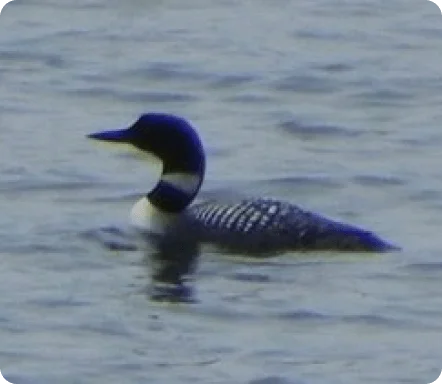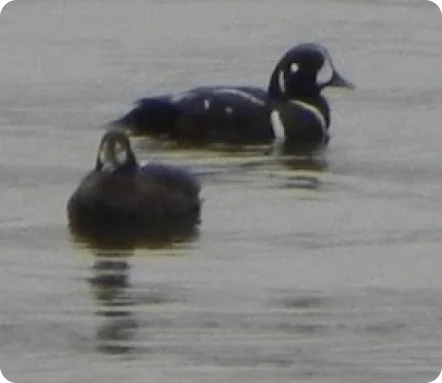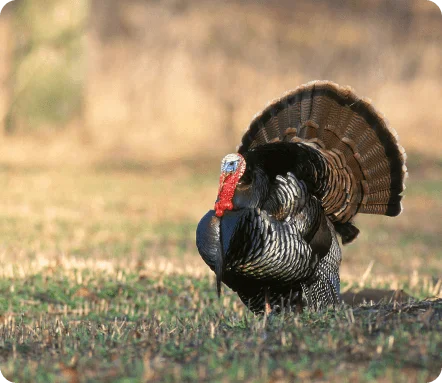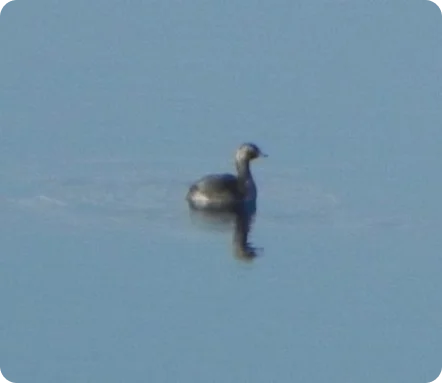Great Blue Heron

This is my first ‘essay’ about my local birds. I have combined observations with some researched information. These postings are not supposed to be dense scientific essays. I have only included some additional information to enhance your appreciation that you, like me, have not gotten around to seeking out. I encourage your additions in both categories as well as your photos.
Great Blue Herons are my favorite bird, what, I think, got me into bird watching. The first heron I met lived in the lagoon behind our family cabin on Whidbey Island. We called him Mr. Hickenlooper. I have been watching herons there for about 50 years now. They present such a serene image. They are easy to spot since they are so motionless most of the time, except for the occasional dart of their head to spear a fish. I see them everywhere. They not only live in bays but can be seen in rivers, creeks, fields. My most recent interesting sighting was on the Colorado River. I was riding the train through the Rockies following the Colorado River. A beautiful Heron was perched on a rock in the middle of the river in a narrow canyon.
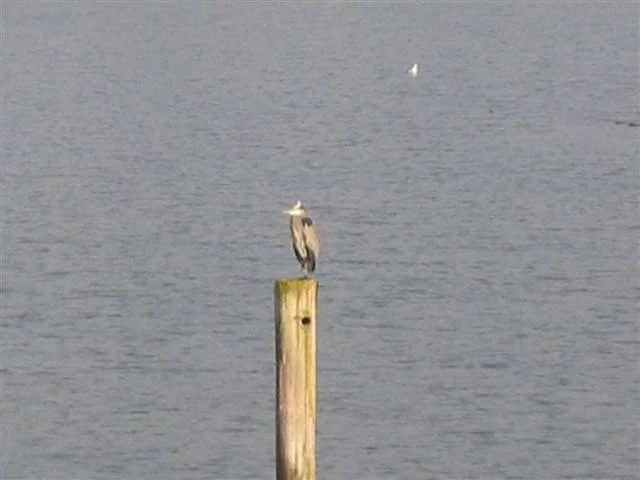
Great Blue Herons, or Ardea herodias, are part of the long-legged waders group. Although they are classified as ‘waders’ what really characterizes these birds is their long bills. They are often called storks or cranes. Cranes are actually ‘marsh birds’ and part of the order of gruiformes, but ornithologists continue to argue about their classifications and differences. * There are other kinds of herons including the Egret, Bittern and Night Heron. We do not see Egrets this far north, but I always enjoy seeing them when traveling to California. I saw Night Herons once when visiting a friend in Denver. But none of the long-legged wading birds are as spectacular as the Great Blue Heron. Herons are about 4 feet tall and have a 6 foot wing span. Despite their size they are not heavy and easily support themselves with only slightly webbed feet.
These days I am blessed to live on Henderson Bay in Gig Harbor, WA. My greatest treat is to wake each morning and watch Mr. Hickenlooper fishing in my front yard. I have taken many pictures of herons over the years, but this is always a challenge. Despite some beautiful markings, especially their white plumes, they blend in with their surroundings. They are also very, very shy. Even opening the door a crack to stick a camera out scares them away. Herons do not know about kyaks though and I have gotten very close to many of them while boating. Floating up next to them is one thing, raising up a camera is another and immediately scares them off. I guess they just don’t like to be photographed. I have managed to have my camera ready a few times. My best memory of doing this was in the lake at the base of the Mendenhall Glacier in Juneau, AK. I guess they can eventually become acclimated to people. I go to Lopez Island each summer and camp on Spencer Spit. There is a large lagoon at the base of the spit with resident herons. You can walk quite close to them along a beach path there.
Mostly Herons are loners and appear to be annoyed when another heron approaches. They rise up, squaaak, and flap their huge wings to shoo off the intruder. I often see a pair out in the bay but they keep their distance.
This summer in the lagoon at Whidbey there are 10 to 15 herons fishing and they seem not to mind being close to others. Recently I sat on a log near the entrance to the lagoon as the tide was receding. I was thrilled to watch a heron parade as they all wandered out of the lagoon. Their walk is very distinctive and fun to watch. What appears to be a knee bending backwards is really their heel. Their knee is tucked up under their feathers. The heel evolved up their legs to assist them in balance by raising their center of balance. It also gives them a spring in their step to help in taking flight much like a sprinter using a heel thrust to spring from the blocks. * (Jake, take notice!) Watching such a large bird take off and fly is always an amazing sight. They slowly flap those huge wings and tend to glide right on the surface of the water.
Perhaps the most amazing thing these big birds do is hang out in trees. They kind of back pedal with their big wings and flap down on pretty small branches. I frequently walk out my back door and flush them out of the trees. It is always a bit startling to hear that squaaak and see that big flapping of wings.
Herons also build nests in trees for mating. Even though they are loners otherwise, they are classified as colonial birds because they nest in groups called rookeries. I saw my first rockery on a birding trip with my sister-in-law in Bolinas outside San Francisco. Audubon Canyon Ranch is a bird sanctuary to preserve this rookery. We were allowed to sneak up a trail and almost look down on the nests. It was amazing. I was surprised a few years later to find out about and to see two rookeries very close to civilization. One is on the Mercer Slough in Bellevue. It is just across the Slough from an office park and can be seen from the parking lots! Another is just off a busy freeway where Highway 18 meets Highway 167 near Auburn, WA. Each has many nests and lots of activity and seem not be be bothered by their neighbors. Because they are such loners, Herons have minimal courting rituals. They gather together in the Rockeries often after migrating together and quickly pair up. The male develops distinctive plumage which is the only time the male and female look different. There is some posturing by the male that includes ‘stretching’. He lifts his head to straight up to display his plumes. The female responds with her own stretch. The male also contributes sticks to the new nest. They take turns fishing to provide food for the hatched young.*
The most surprising thing is their squaaak, squaaak, squaaak sounds. You would expect such a noise to come from some pre-historic creature and not this beautiful bird. I especially like to listen for these sounds after dark. In fact Herons are prehistoric. They are one of the oldest birds. They have survived because they have few enemies. Actually man is their worst enemy. In the early 1900’s their plumes became demanded for ladies hats. It is estimated that 100,000 to 200,000 birds were killed by bounty hunters. Eventually the public outcry became loud enough to stop this practice. In fact, the U.S. Audubon Society was formed at this time specifically to stop the slaughter of herons and egrets. *
Herons are very patient and will stand totally still watching for fish forever and then just when you think they have gone to sleep they will dart down and grab the fish. They swallow it whole and you can see the bulge going down their long neck. Herons can actually see under water. They have ‘monocular’ eyes, meaning that each eye operates independently of the other. Their eyes are placed far enough back on their heads that they can without much movement actually see 360 degrees. * I guess that is why it is so difficult to sneak up on them.
Scientists have had trouble tracking herons. That long beak prevents them from attaching tracking devices. But it is believed that Herons live up to 20 years.*
In parts of their range where food is not available in the winter, Great Blue Herons are migratory, and some may migrate to Washington from points farther north. Most of Washington’s breeding population remains in the state year round. **
We are indeed blessed to have such a magnificant year round resident. Even after 50 years, each heron sight or sound gives me great pleasure.

